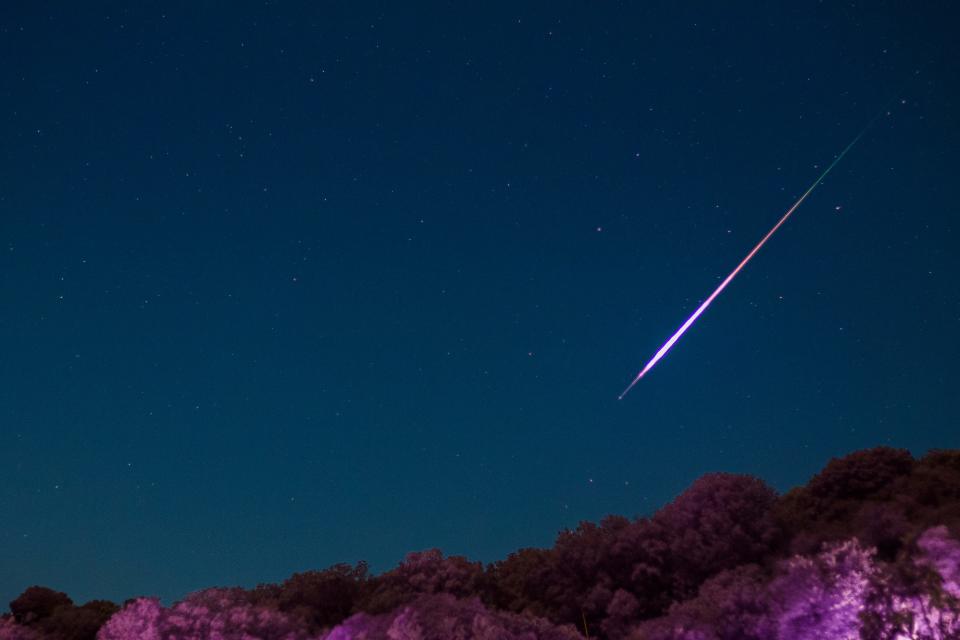
-
Viewers of Saturday's Perseid meteor shower might see up to 100 "fireballs" per hour at its peak.
-
Fireballs are different from other meteors — they're brighter and rarer, and can audibly "boom."
-
To best see them, move away from the city and let your eyes adapt to the night sky for half an hour.
For meteor shower enthusiasts, the chance to spot a fireball streak across the night sky is a real treat.
That's because fireballs are just what they sound like: exceptionally brilliant meteors that are rarer the brighter they are, according to the American Meteor Society.
Lucky for meteor enthusiasts of all ages, the popular Perseid meteor shower, set to peak August 13, could bring up to 100 fireballs an hour, Insider previously reported. The phenomenon is often rare to witness, according to the AMS.
"If you're going to watch any meteor shower this year — because it's going to be the most comfortable and there are going to be lots of fireballs — that's the one to see," Bill Cooke, lead for NASA's Meteoroid Environment Office, told Insider's Marianne Guenot.
Fireballs are usually the result of large meteoroids that enter Earth's atmosphere. According to NASA, these objects are still not sizable enough to stay intact as they burn on their descent to Earth, but meteorites can sometimes be retrieved from them.
To be considered a fireball, a meteor — a streak of light caused by a meteoroid that enters the earth's atmosphere — needs to reach a magnitude -4, which means it appears brighter than Venus in the night sky, according to the AMS.
The magnitude scale in astronomy categorizes how bright stars are as seen by humans on Earth, according to EarthSky. Lower magnitudes refer to celestial bodies that appear brighter.
The light of a fireball can also appear as bright colors, people have reported, from reds and blues to yellows and greens — although the exact colors of the burning meteoroid itself can be obscured by the fact that other elements and debris surrounding it are also being burned, according to the AMS.
Very vivid fireballs can also produce sounds like "hissing static, to sizzling, to popping sounds," the AMS said. Even brighter ones can produce a sonic boom.
According to NASA, there are also more intense meteors, referred to as bolides and superbolides, that result from meteoroids or asteroids that explode in the atmosphere.
According to previous reporting from Insider, you have the best chance of seeing the shower in the pre-dawn hours.
This year will be especially good for viewers, Cooke told Insider, because the moon will be at the end of its crescent phase, meaning there is less light to obstruct viewing in the sky.
Viewers should be sure to give their eyes time — NBC recommends allotting 20 to 30 minutes — to adjust to see the shower correctly.
There are many places to escape city lights to give yourself a better chance at viewing a fireball — Insider has a list of the darkest places to watch the stars in all 50 US states.
Read the original article on Business Insider
"spot" - Google News
August 13, 2023 at 11:05AM
https://ift.tt/8xhcgmn
Here's what fireballs are and how to best spot them at the Perseid meteor shower's peak - Yahoo Canada Shine On
"spot" - Google News
https://ift.tt/XMbVKJF
https://ift.tt/fBGE1tr
Bagikan Berita Ini

















0 Response to "Here's what fireballs are and how to best spot them at the Perseid meteor shower's peak - Yahoo Canada Shine On"
Post a Comment